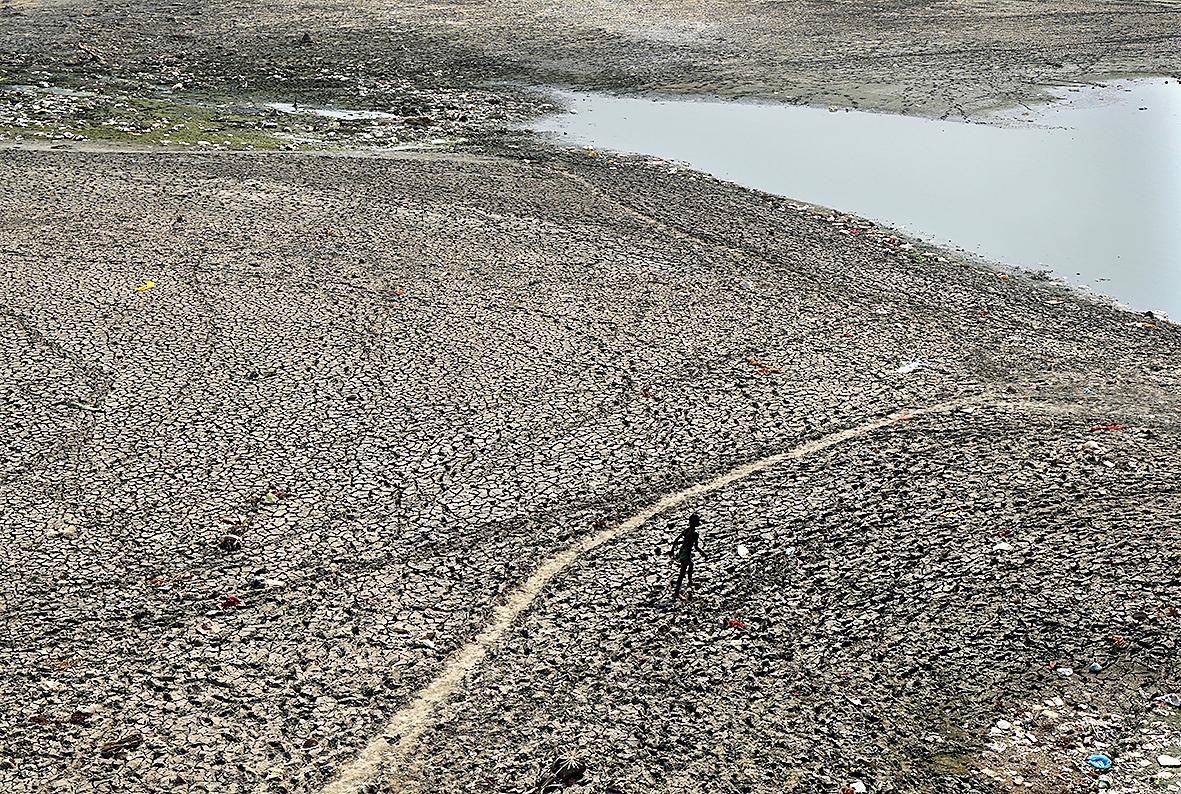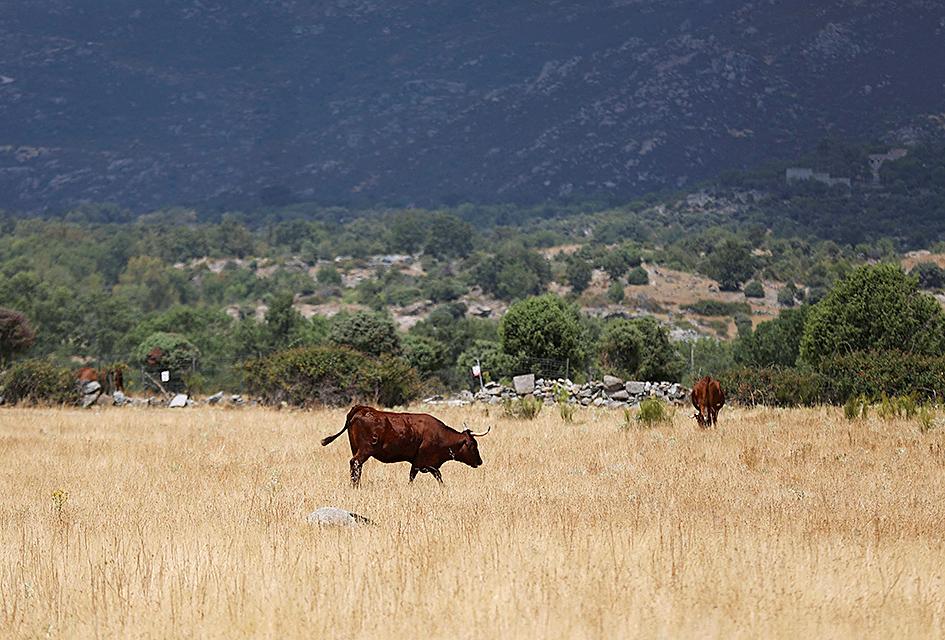In March, April and May this year, India and its neighbor endured repeated heatwaves that exposed more than a billion people to dangerously hot conditions. India broke several temperature records. The warmest March in more than a century was recorded across the country and a new high of more than 49 degrees Celsius was hit in Delhi in May.
Record-breaking heat has also been recorded elsewhere this year, including the UK, which smashed its previous record by an incredible 1.6 degrees Celsius, reaching more than 40 degrees Celsius. Portugal reached 47 degrees Celsius on July 21, the hottest July day on record, while several places in France recorded new highs.
These heatwaves have reignited the debate about how we can protect people from rising temperatures — and how high we can stand them to go. But the headline figures do not give the whole story when it comes to the impact of high temperatures on humans, because humidity, which is not factored into these figures, plays a huge role in how we actually experience heat.

Photo: AP
Recent research has found that we may actually already be nearing the threshold values for human survivability of temperature and humidity for short periods in some places of the world — a measure known as the “wet-bulb” temperature — and that this threshold may actually be far lower than previously thought.
WET-BULB TEMPERATURE
Wet-bulb temperature (WBT) combines dry air temperature (as you’d see on a thermometer) with humidity — in essence, it is a measure of heat-stress conditions on humans.

Photo: Reuters
The term comes from how it is measured. If you slide a wet cloth over the bulb of a thermometer, the evaporating water from the cloth will cool the thermometer down. This lower temperature is the WBT, which cannot go above the dry temperature. If humidity in the surrounding air is high, however — meaning the air is already more saturated with water — less evaporation will occur, so the WBT will be closer to the dry temperature.
“The [wet-bulb] temperature reading you get will actually change depending on how humid it is,” says Kristina Dahl, a climate scientist at the Union of Concerned Scientists. “That’s the real purpose, to measure how well we’ll be able to cool ourselves by sweating.”
Humidity and temperature are not the only things that affect a person’s body temperature: solar radiation and wind speed are other factors. But WBT is especially important as a measure of indoor environments, where deaths often occur in heatwaves, says Larry Kenney, a physiology professor at Penn State University.
DANGEROUS TEMPERATURES
Concern often centers on the “threshold” or “critical” WBT for humans, the point at which a healthy person could survive for only six hours. This is usually considered to be 35 degrees Celsius, approximately equivalent to an air temperature of 40 degrees Celsius with a relative humidity of 75 percent. (At the UK’s 19 July peak temperature, relative humidity was approximately 25 percent and the wet-bulb temperature about 25 degrees Celsius.)
Humans usually regulate their internal body temperature by sweating, but above the wet-bulb temperature, we can no longer cool down this way, leading our body temperature to rise steadily. This essentially marks a limit to human adaptability to extreme heat — if we cannot escape the conditions, our body’s core can rise beyond the survivable range and organs can start failing.
The oft-cited 35 degrees Celsius value comes from a 2010 theoretical study. However, research co-authored by Kenney this year found that the real threshold our bodies can tolerate could be far lower.
“Our data is actual human subject data and shows that the critical wet-bulb temperature is closer to 31.5 degrees Celsius,” he says.
Bill McGuire, director of the Benfield UCL Hazard Research Center in the UK, says if the new finding is true, we are in “a whole new ball game” when it comes to extreme heat. “The numbers of people exposed to potentially deadly combinations of heat and humidity across the world would be vastly higher than previously thought.”
It is important to note that heat gets dangerous for many people far below the threshold WBT.
Where could the wet-bulb threshold be passed?
One 2015 study concluded extremes are likely to approach and exceed 35 degrees Celsius in the region around the Arabian Gulf towards the end of the century if greenhouse gas emissions are not reined in, posing questions for human habitability there.
In 2020, research found that some coastal subtropical locations have already experienced WBTs of 35 degrees Celsius, albeit only for a few hours.
“Previous studies projected that this would happen several decades from now, but this shows it’s happening right now,” said lead author Colin Raymond, a climate scientist at Nasa’s Jet Propulsion Laboratory. “The times these events last will increase and the areas they affect will grow in direct correlation with global warming.”
The study also found that globally, the number of times that a WBT of 30 degrees Celsius was reached — still considered an extreme humidity and heat event — more than doubled between 1979 and 2017. There were about 1,000 occurrences of a 31 degrees Celsius WBT, and about a dozen above 35 degrees Celsius, in Pakistan, India, Saudi Arabia, Mexico and Australia.
One important question is how temperature rises because of the climate crisis correlate with rises in WBT extremes. A study last year found that the maximum WBT in the tropics will rise by 1 degrees Celsius for each 1 degrees Celsius of average warming. This means limiting global heating to 1.5 degrees Celsius above the pre-industrial era would prevent the majority of the tropical area — where 40 percent of the global population lives — from reaching the survival limit of 35 degrees Celsius, the paper said.
Heatwaves are worsening many times faster than any other type of extreme weather because of the climate crisis. Scientists estimate that it made the India and Pakistan heatwave 30 times more likely. As another paper put it, asking whether today’s most impactful heatwaves could have occurred in a pre-industrial climate is “fast becoming an obsolete question.”
Instead, as heatwaves begin affecting more people’s lives more frequently, the question of what we can do about them is becoming ever more important. As the world sees the deadly mix of high humidity and high temperature more and more often, this could ultimately mean that some places simply become too hot to live in, opening up the need for migration pathways to enable millions of people to get away from their home areas.

Climate change, political headwinds and diverging market dynamics around the world have pushed coffee prices to fresh records, jacking up the cost of your everyday brew or a barista’s signature macchiato. While the current hot streak may calm down in the coming months, experts and industry insiders expect volatility will remain the watchword, giving little visibility for producers — two-thirds of whom farm parcels of less than one hectare. METEORIC RISE The price of arabica beans listed in New York surged by 90 percent last year, smashing on Dec. 10 a record dating from 1977 — US$3.48 per pound. Robusta prices have

The resignation of Taiwan People’s Party (TPP) co-founder Ko Wen-je (柯文哲) as party chair on Jan. 1 has led to an interesting battle between two leading party figures, Huang Kuo-chang (黃國昌) and Tsai Pi-ru (蔡壁如). For years the party has been a one-man show, but with Ko being held incommunicado while on trial for corruption, the new chair’s leadership could be make or break for the young party. Not only are the two very different in style, their backgrounds are very different. Tsai is a co-founder of the TPP and has been with Ko from the very beginning. Huang has

A few years ago, getting a visa to visit China was a “ball ache,” says Kate Murray. The Australian was going for a four-day trade show, but the visa required a formal invitation from the organizers and what felt like “a thousand forms.” “They wanted so many details about your life and personal life,” she tells the Guardian. “The paperwork was bonkers.” But were she to go back again now, Murray could just jump on the plane. Australians are among citizens of almost 40 countries for which China now waives visas for business, tourism or family visits for up to four weeks. It’s

Beyonce on Sunday finally won the Grammy for the year’s best album for her culture-shaking Cowboy Carter, as rapper Kendrick Lamar posted a clean sweep on a night that served as a love letter to fire-ravaged Los Angeles. Chappell Roan, Charli XCX, Doechii and Sabrina Carpenter emerged as big winners at the performance-heavy gala, while heavyweights Taylor Swift and Billie Eilish went home empty-handed. Beyonce’s win for Cowboy Carter now makes her the most nominated, most decorated artist at the awards show ever — as well as the first Black woman to claim the top prize in this century. The triumph was all